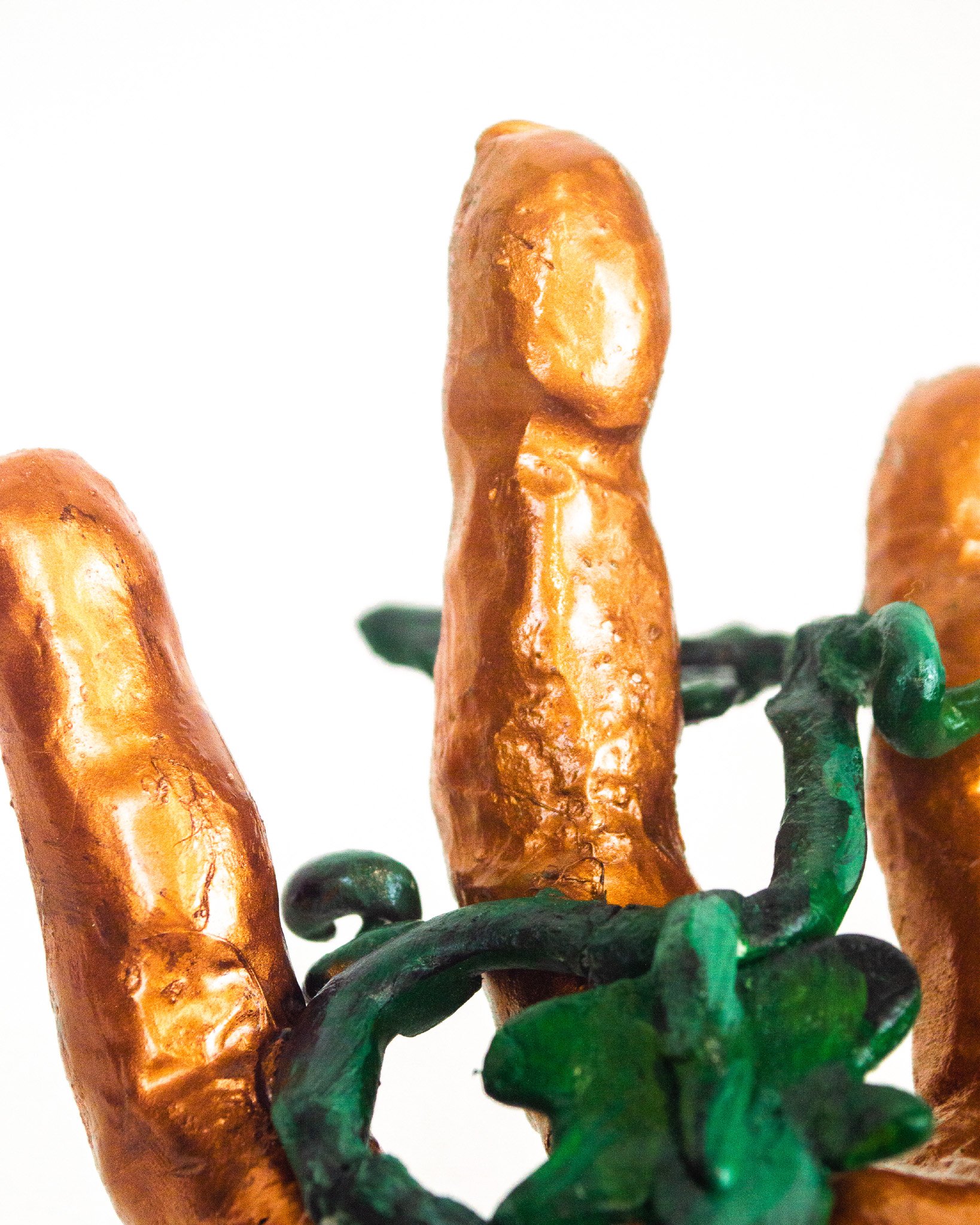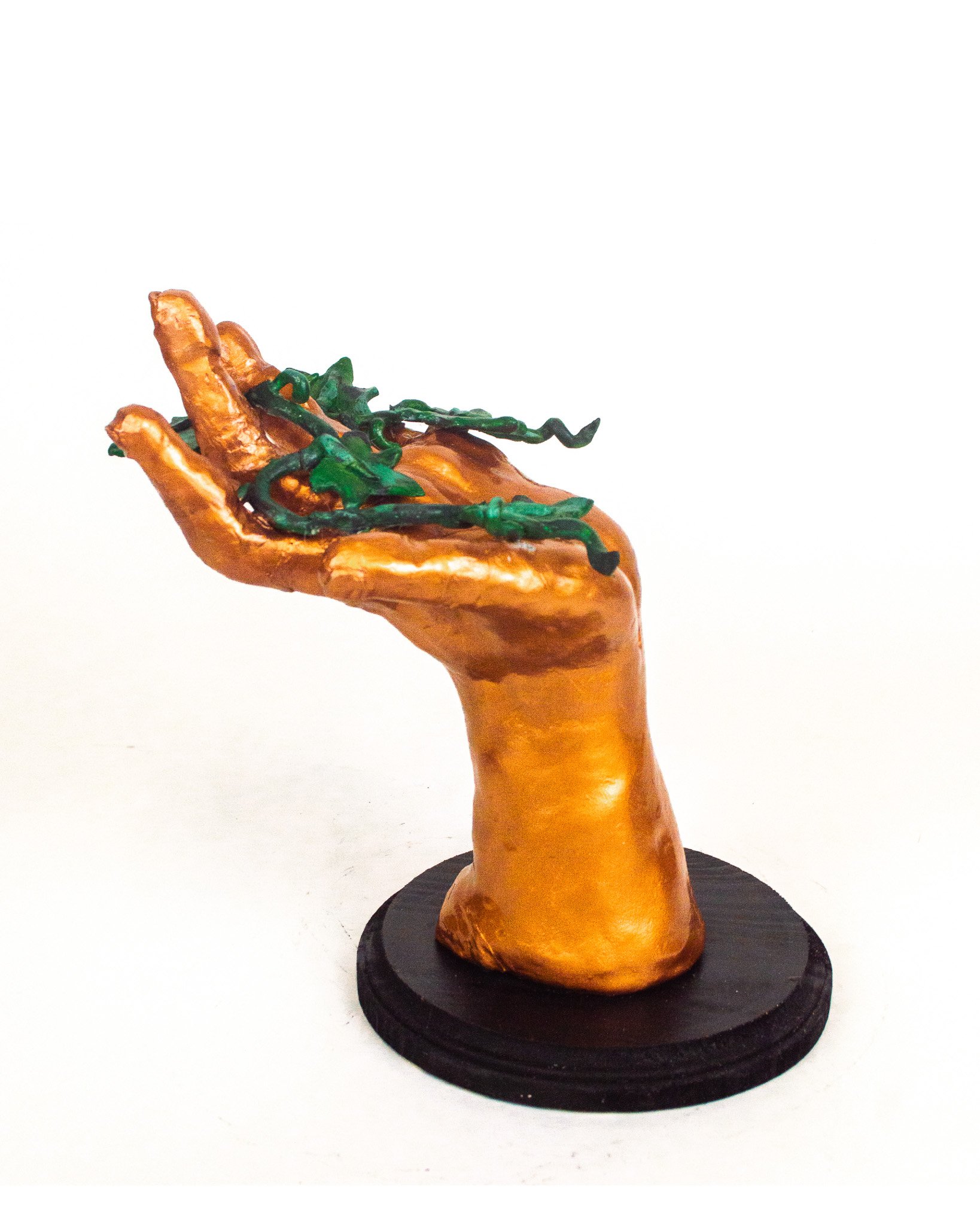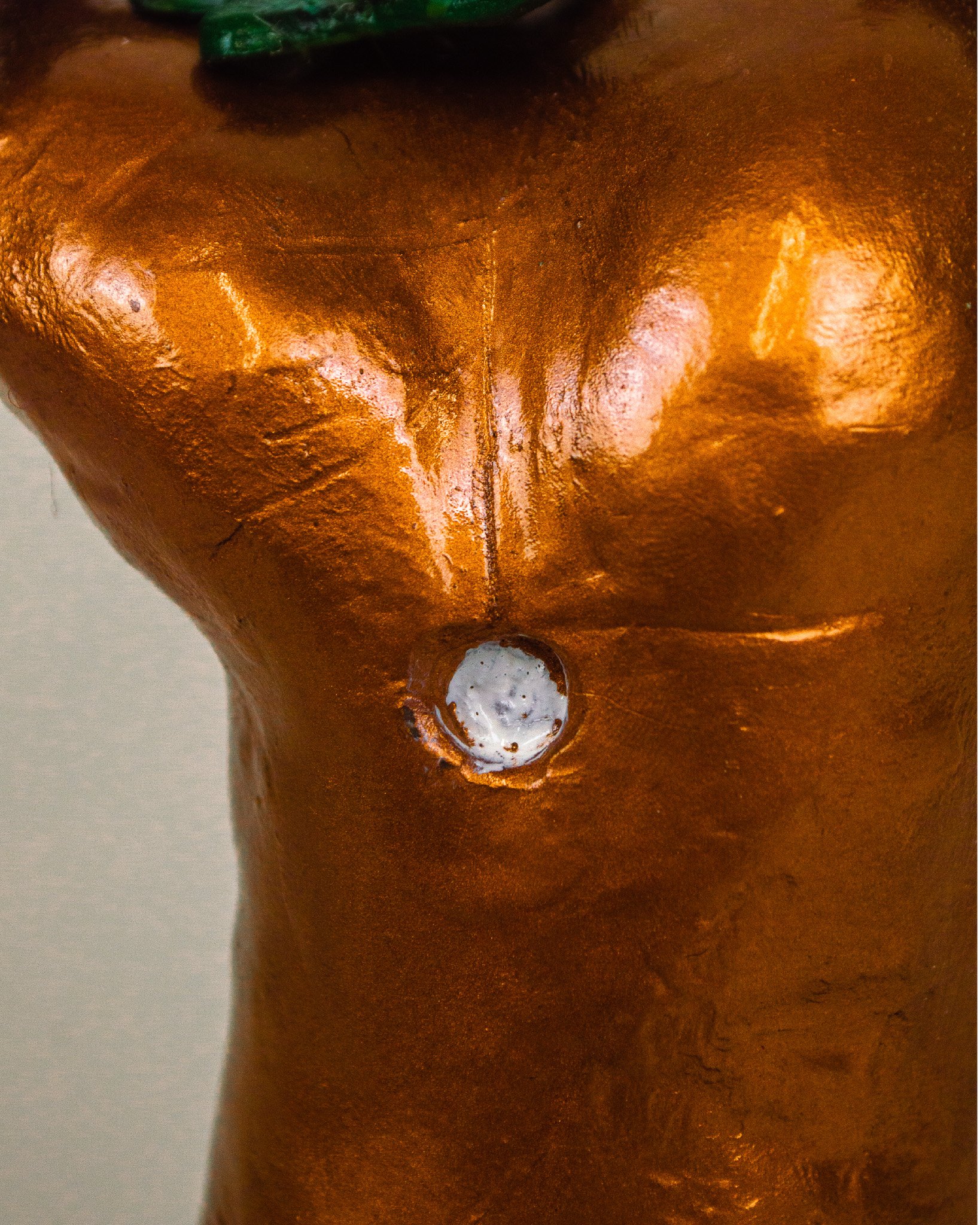Gospel Sculpture Series
4 Sculptures made with sculpey clay and acrylics
I wanted to visualize the Gospel in a different, conceptual way. I was introduced to the book “Signs & Symbols in Christian Art” by George Ferguson during the Art History 1 class I took my sophomore year in college. I felt so drawn to all the beautiful symbols used in early Christian paintings. Many artists associated plants, animals, and other items to the gospel. The connections captivated me and really made me reflect on how we can use imagery to communicate the universal gospel; these symbols can be interpreted by everyone no matter the language or nationality. The use of symbolism genuinely demonstrates how everything point to God and his power; “In his hand is the life of every creature and the breath of all mankind” (Job 12:10, Holy Bible). In Ferguson’s book, the illustration of a hand represents the presence of the almighty God; “…the presence of the Almighty was frequently indicated by a hand issuing from a cloud that hid the aw-inspiring and glorious majesty of God…” (Ferguson 47). The Bible uses verbal illustrations of God creating everything with his hands (Hebrews 1:10, Psalm 8:3, Psalm 102:25, Isaiah 45:12). To illustrate God’s provision and creation, every sculpture involves a hand holding a symbolic plant. Since there are 4 projects in the series, I decided to have each sculpture represent the 4 main parts of the gospel; Creation, Fall, Redemption, and Restoration.
“The Creation” sculpture symbolizes the creation of the world and mankind; (Genesis 1:1). He created everything perfectly, including humanity. Everything was pure and free from the corruption of sin. To signify this, the first sculpture depicts an unblemished hand holding a Lily flower. In “Signs & Symbols in Christian Art”, the Lily flower is described to symbolize purity. It is often correlated to the Virgin Mary (Ferguson 33). However, in this sculpture the Lily is symbolizing the purity of mankind and creation at the very beginning of time. This symbolizes the time before sin had entered into the world; the beginning of time when Adam and Eve were in beautiful harmony with nature and God.
CREATION
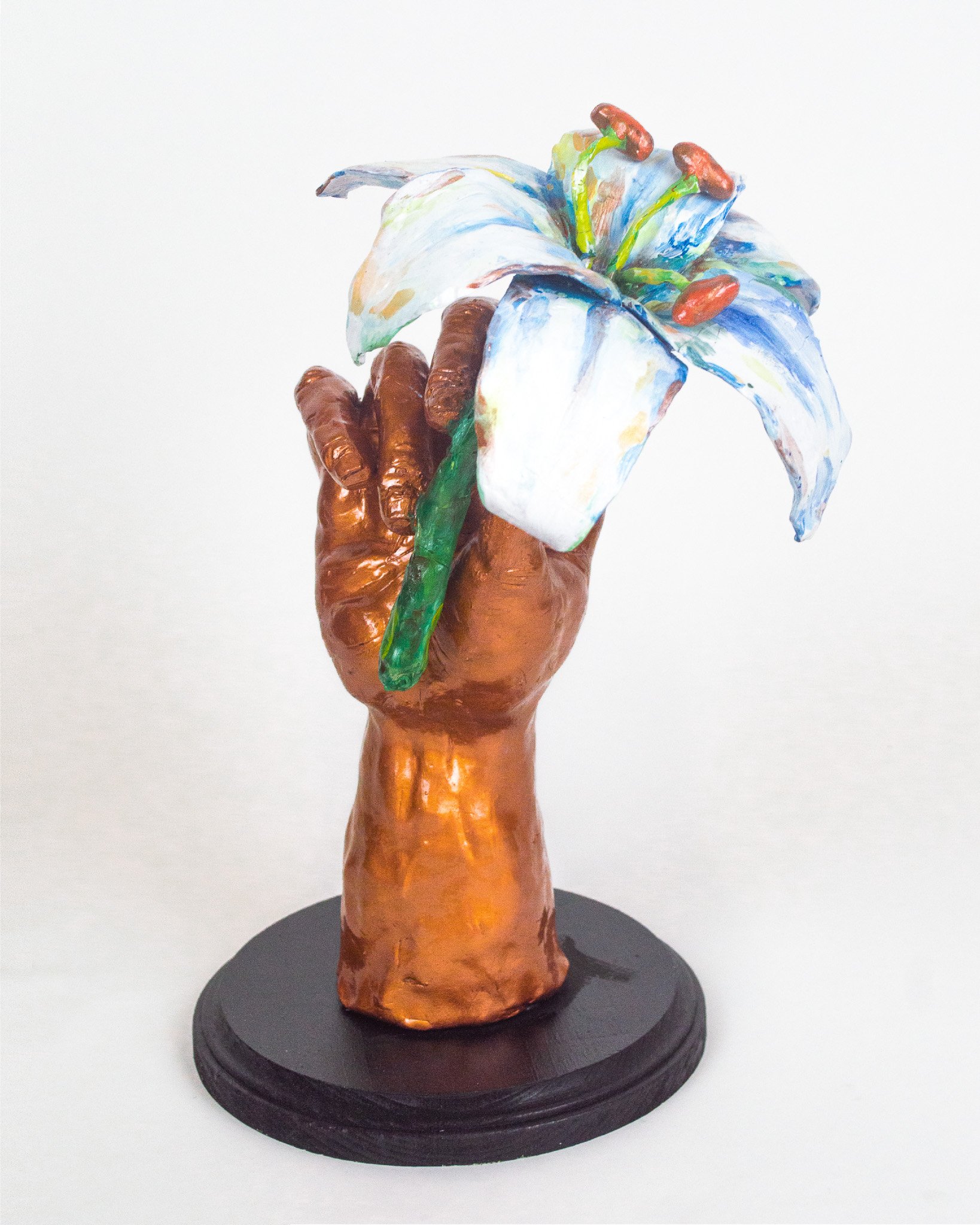

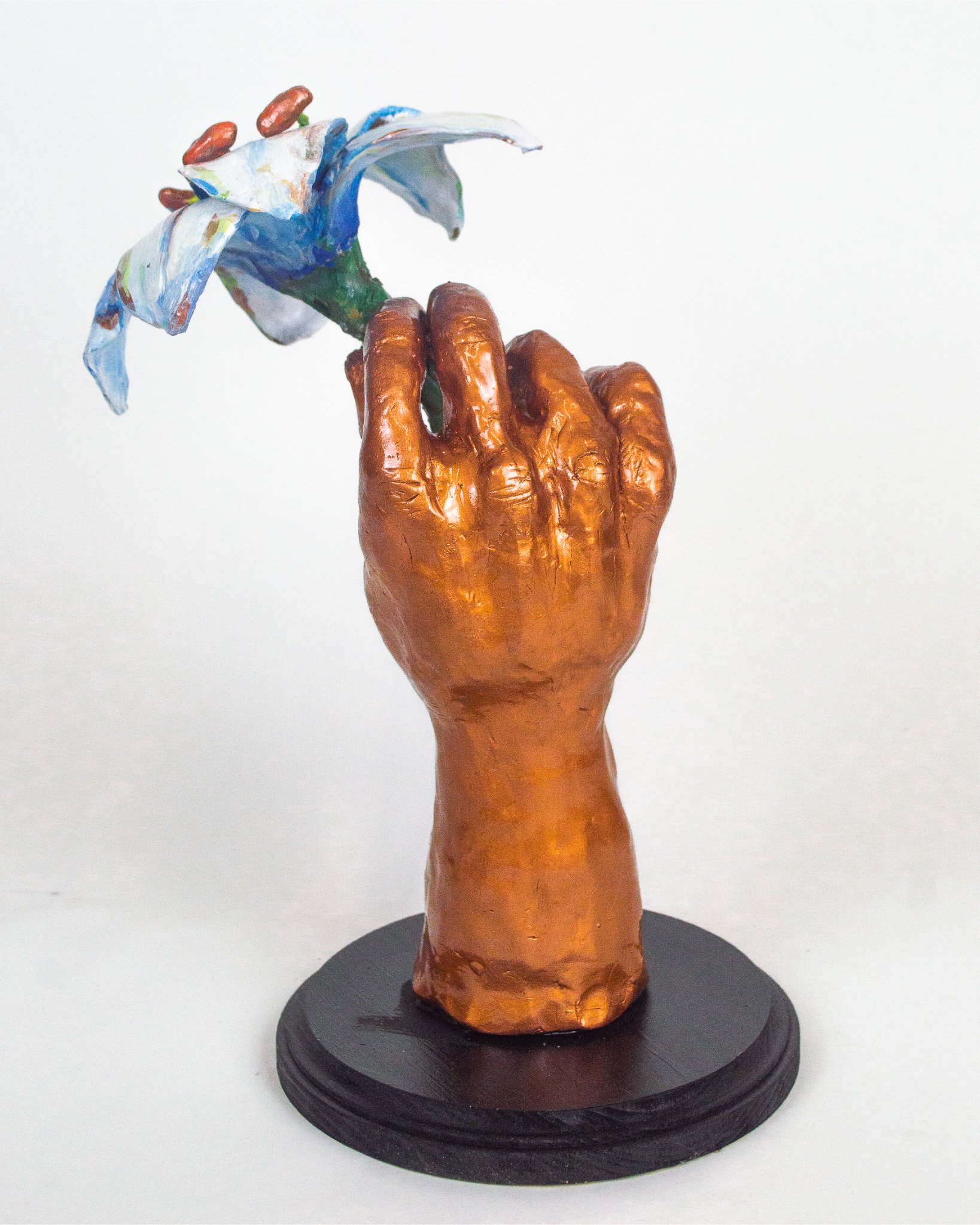



The next sculpture illustrates “The Fall” described in Genesis 3. Sin enters the world through the serpent who persuaded Eve to eat the fruit God commanded not to eat. The serpent convinced her to believe she would gain the wisdom of God if she ate the fruit. She believed the deceitful lie and gave the fruit to Adam to eat as well. This ended in consequences laid upon them as well as all of humanity. Because of sin, the innocence of creation was demolished. To illustrate the fall, the sculpted hand is worn and rough – such as a “workers hand”. This illustrates the suffering and work humanity goes through, demonstrating our mortality under the circumstances of sin. The hand is holding a Thistle branch; “The thistle is the symbol of earthly sorrow and sin because of the curse pronounced against Adam by God in Genesis 3:17-18…” (Ferguson 38).
FALL



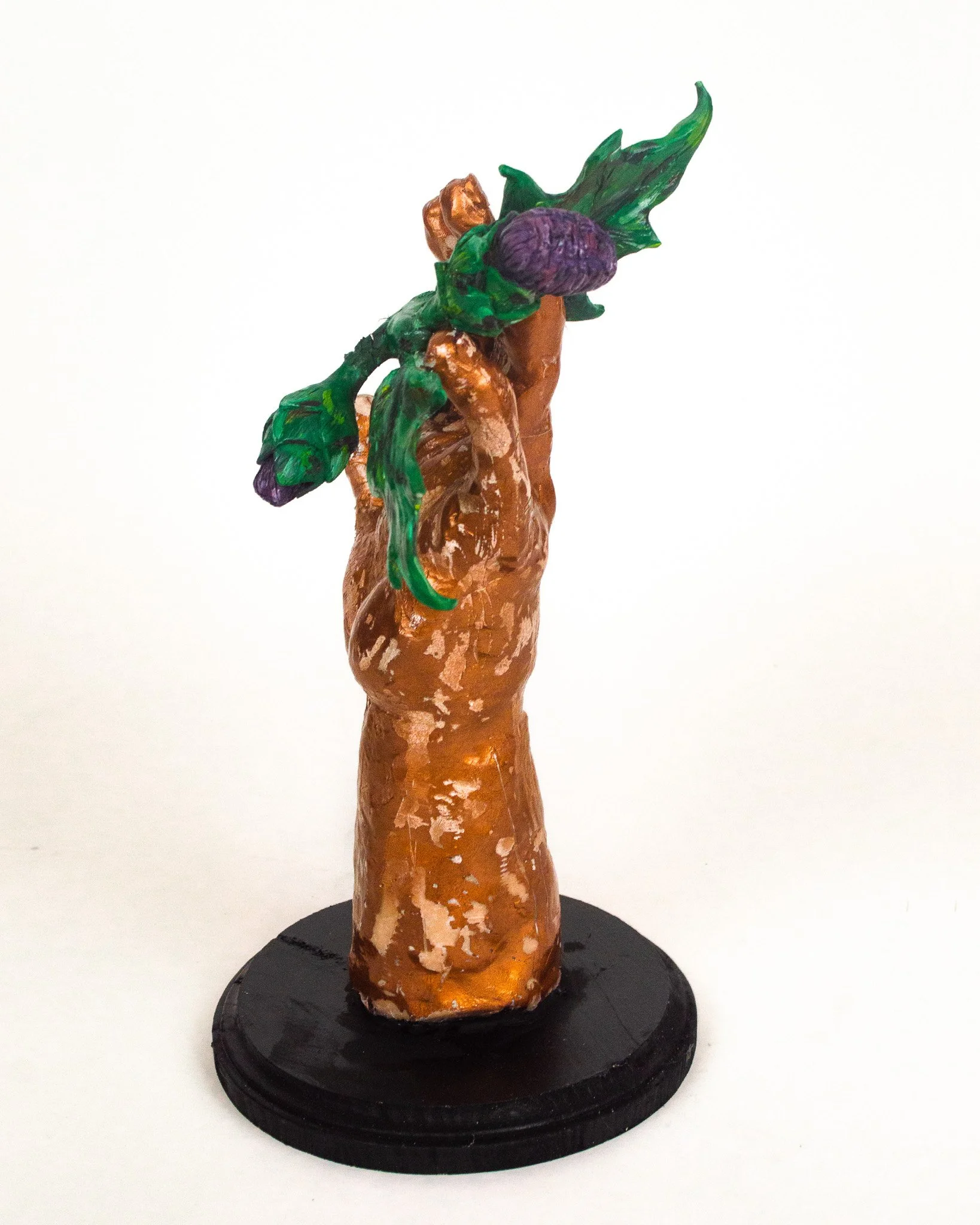
![Post 2-Fall]-06.jpg](https://images.squarespace-cdn.com/content/v1/63f792d5723dbf675ea2fd49/95e22e64-e1ba-47c1-a41e-fa54f30356b8/Post+2-Fall%5D-06.jpg)

REDEMPTION
The third sculpture “The Redemption” illustrates the hope of humanity restored by the sacrifice of Jesus Christ; “The Son is the image of the invisible God, the firstborn over all creation… For God was pleased to have all his fullness dwell in him, and through him to reconcile to himself all things, whether things on earth or things in heaven, by making peace through his blood, shed on the cross” (Colossians 1:15, 19-20). The sculpture depicts a hand with fresh nail wound holding a palm leaf. The wound depicts the intense sacrifice Jesus made in order to save all of our souls. The palm leaf has been viewed as a symbol of victory since the early Roman Olympics (Ferguson 36). The implication was conveyed into Christian symbolism, representing “His triumph over sin and death” (Ferguson 36). Jesus took all of humanity’s sin with him on the cross, and three days later he rose from the grave, leaving our burdened sin in the grave. Because of this supernatural act, we have the promise in Jesus Christ of the connection between humanity and God. “‘Where, O death, is your victory? Where, O death, is your sting?’ The sting of death is sin, and the power of sin is the law. But thanks be to God! He gives us the victory through our Lord Jesus Christ.” (Corinthians 15:55-58). We do not have to sacrifice and do acts of work to be “right with God”. God’s love transcends through Jesus’ sacrifice to all of us who choose to believe in him.
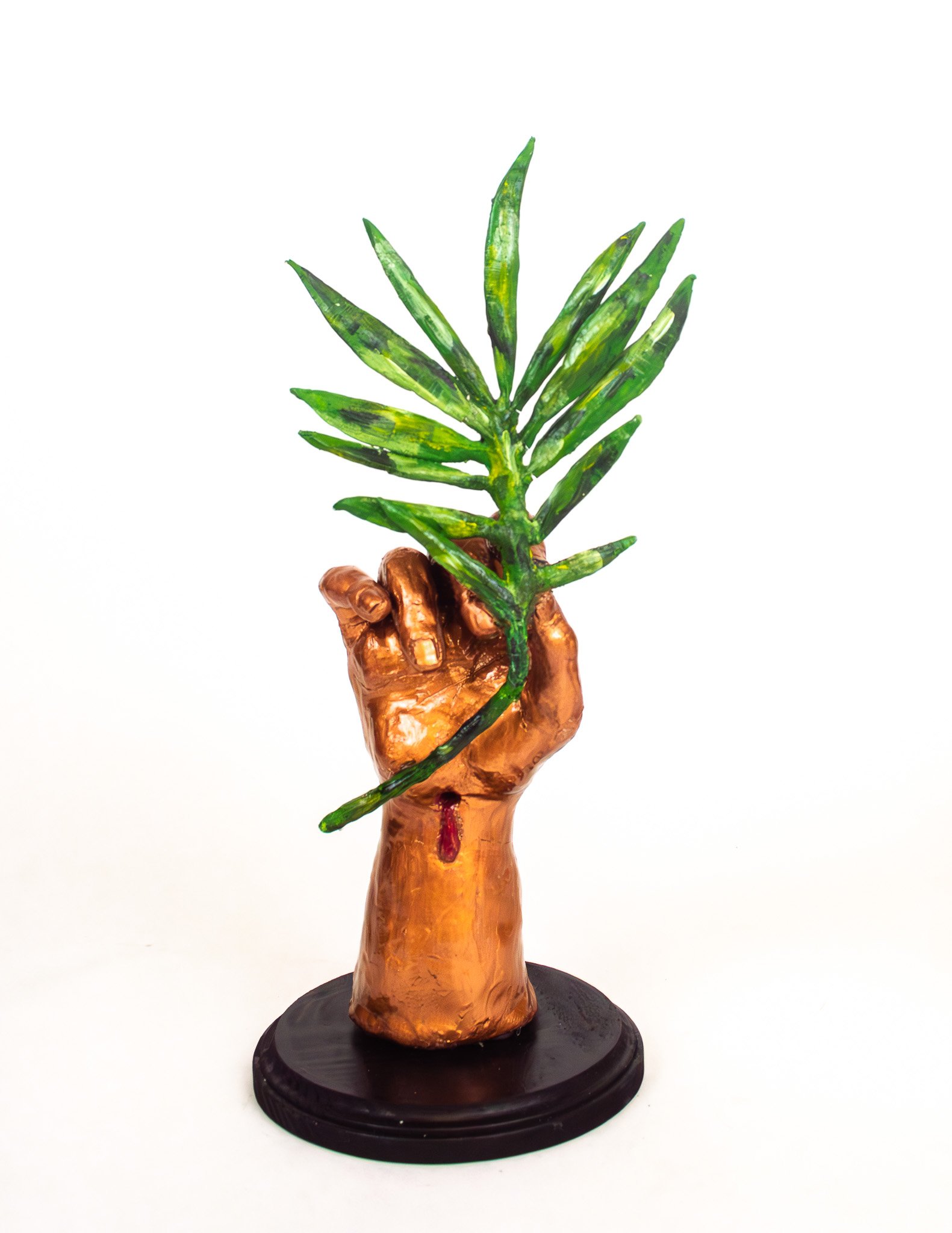
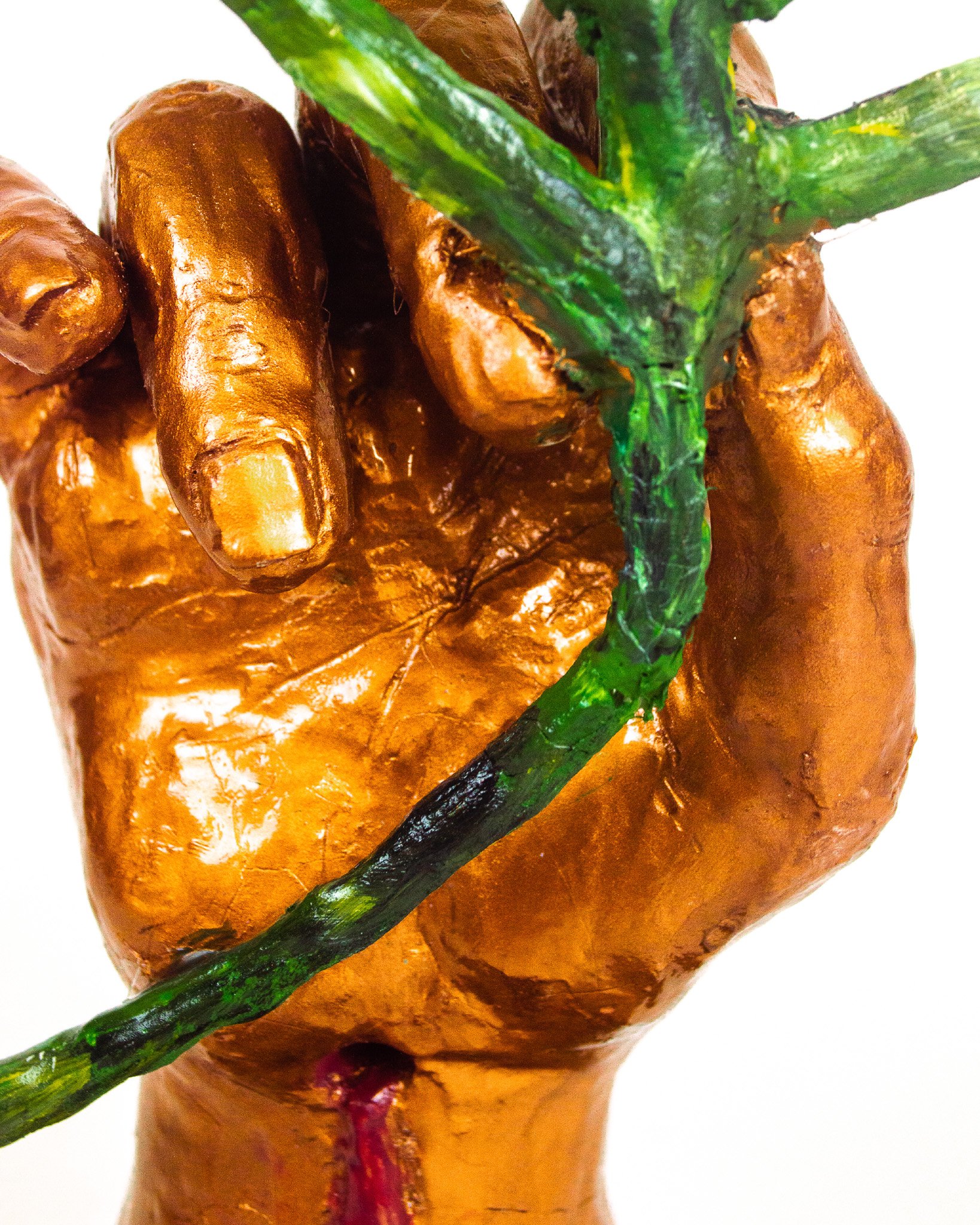




RESTORATION
The last sculpture is “The Restoration”. Jesus promises a new future for all who follow him; “The present order is the old creation in Adam, but Christ will bring a new creation” (Wellum). He promises heaven to those who follow him. Additionally, He promises God will direct us towards a new creation; a kingdom formed by all followers from around the world and from every point in time; “When the Son of Man comes in his glory, and all the angels with him, then he will sit on his glorious throne. Before him will be gathered all the nations, and he will separate people one from another as a shepherd separates the sheep from the goats. And he will place the sheep on his right, but the goats on the left” (Matthew 25:31-36). The sculpture is a hand with healed nail wound (scar) an ivy vine. The healed wound represents the healing and restoration provided by Jesus Christ. The ivy represents eternity with Christ; “The ivy has always been closely identified with death and immortality. Because it is forever green, it is a symbol of fidelity and eternal life” (Ferguson 33).



